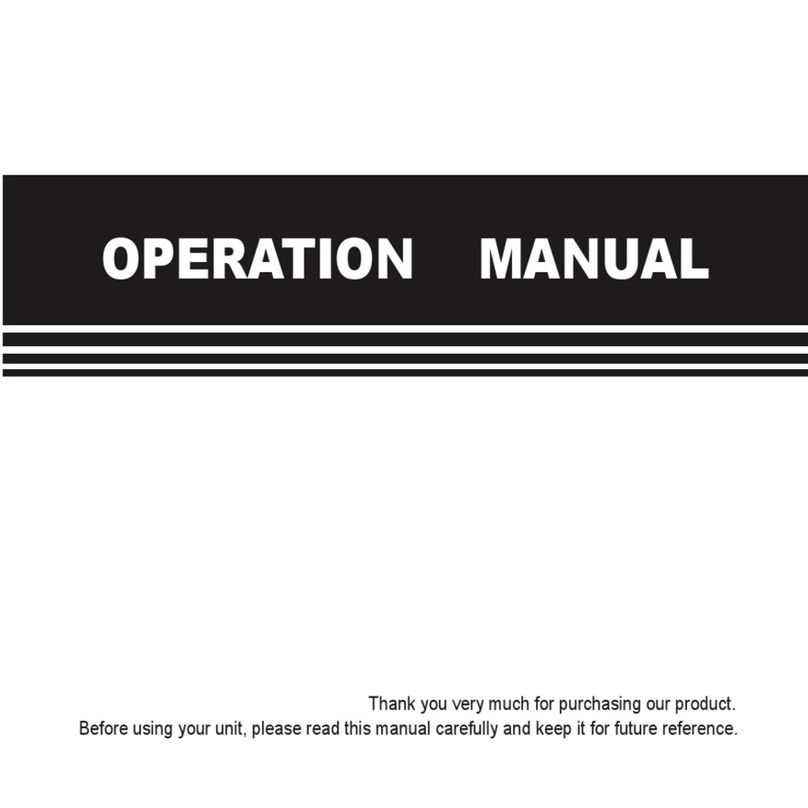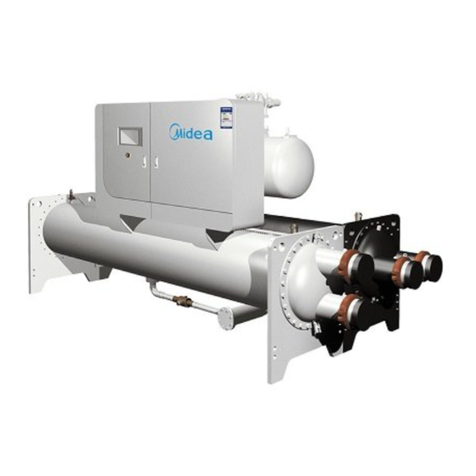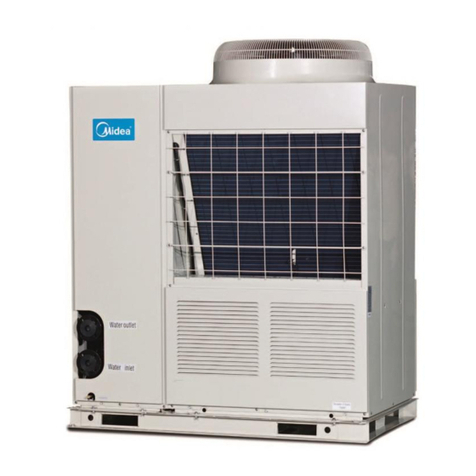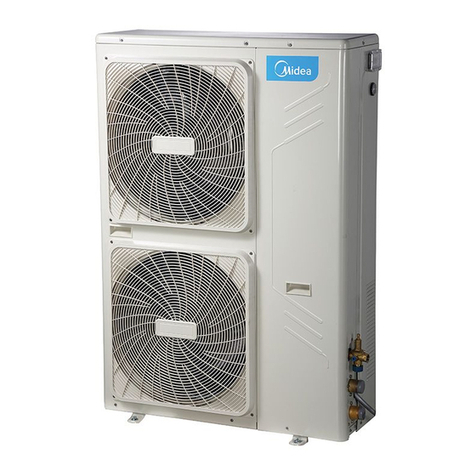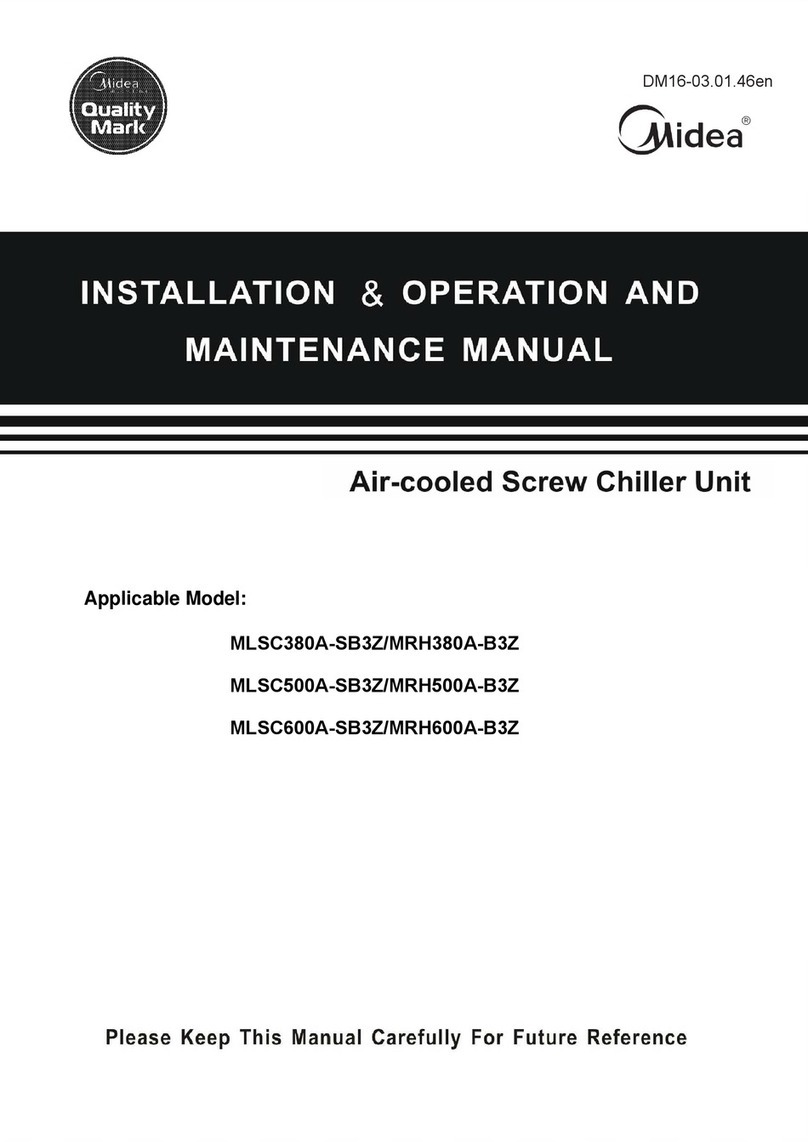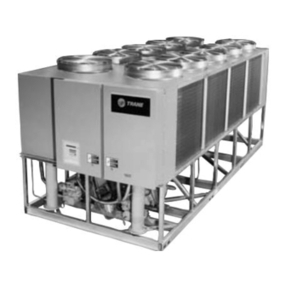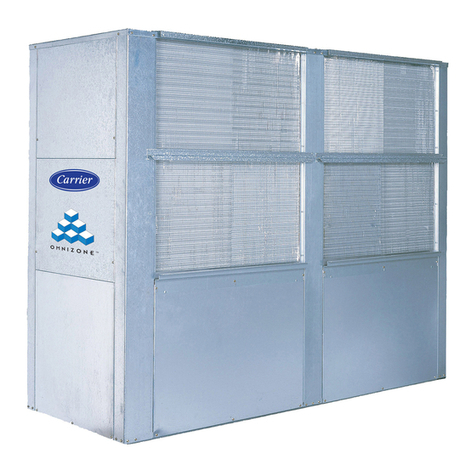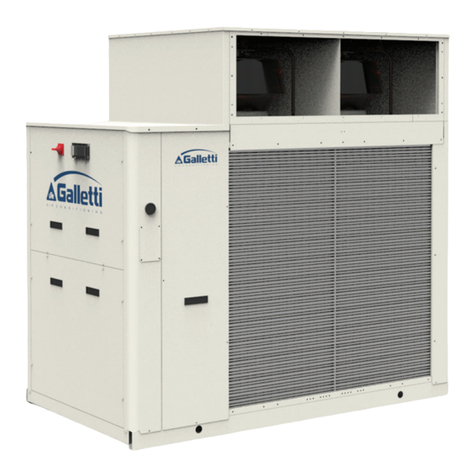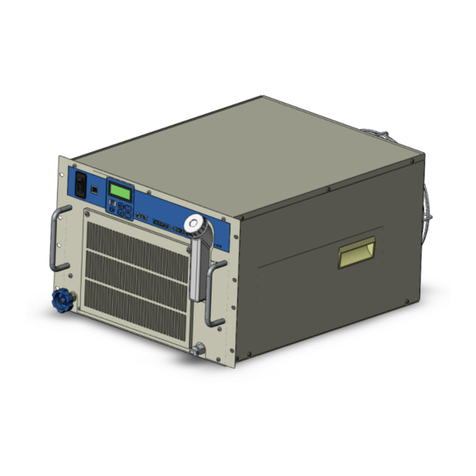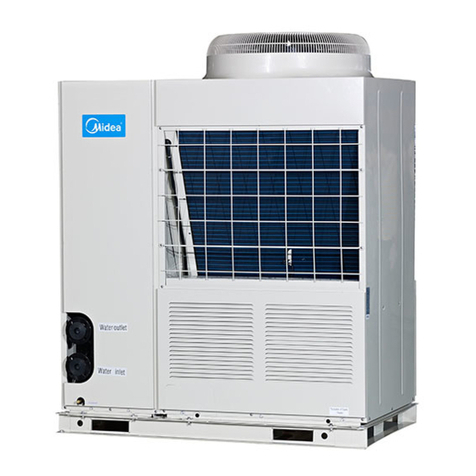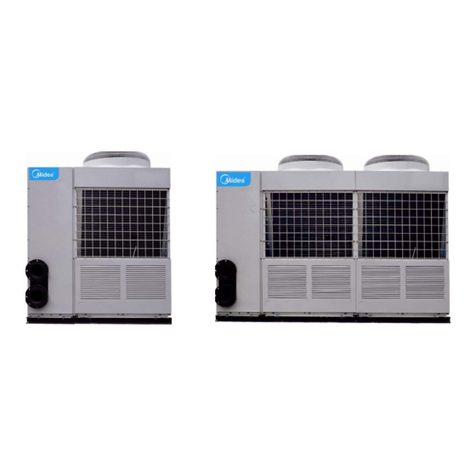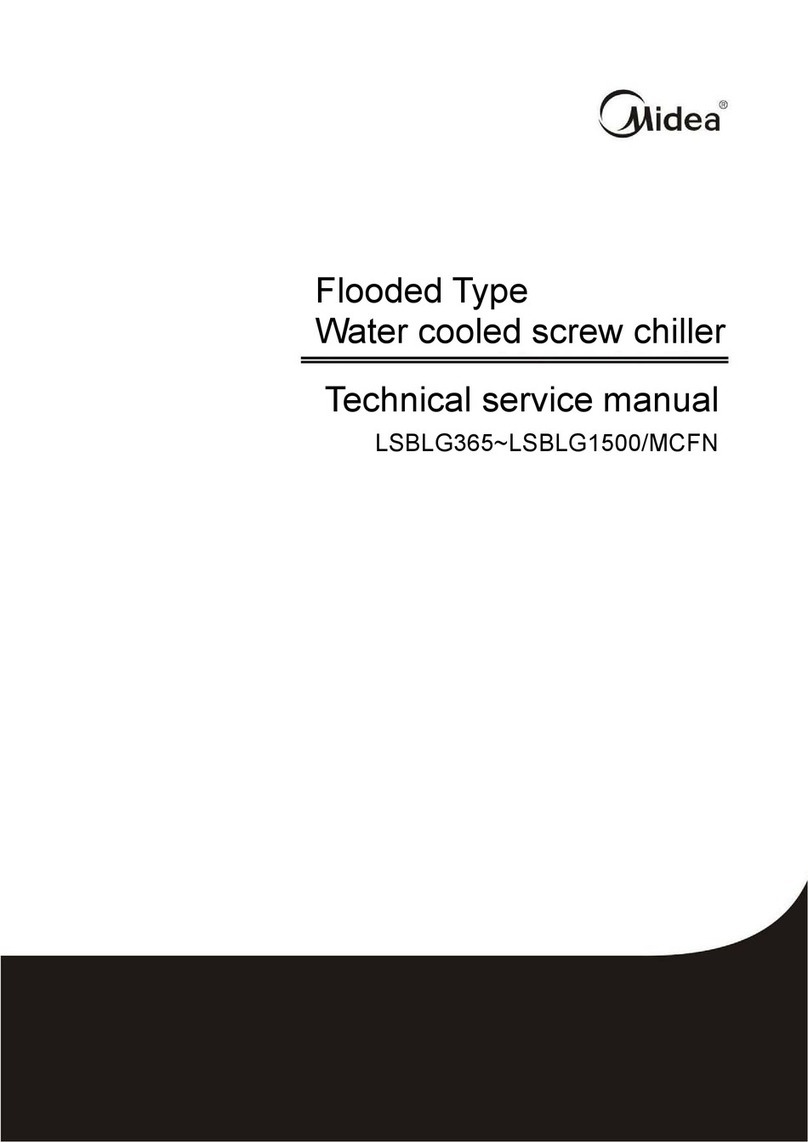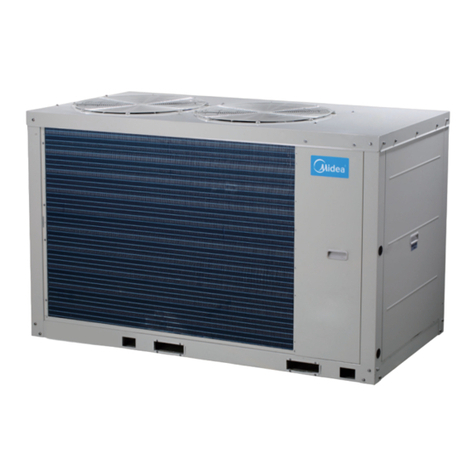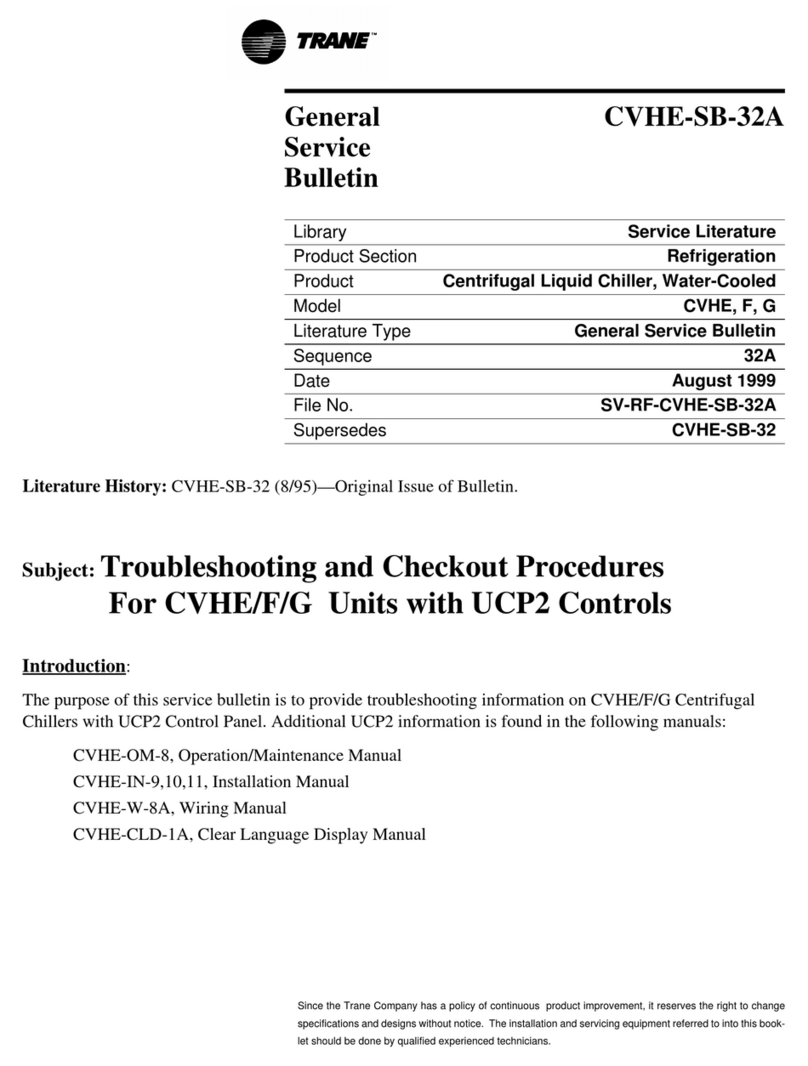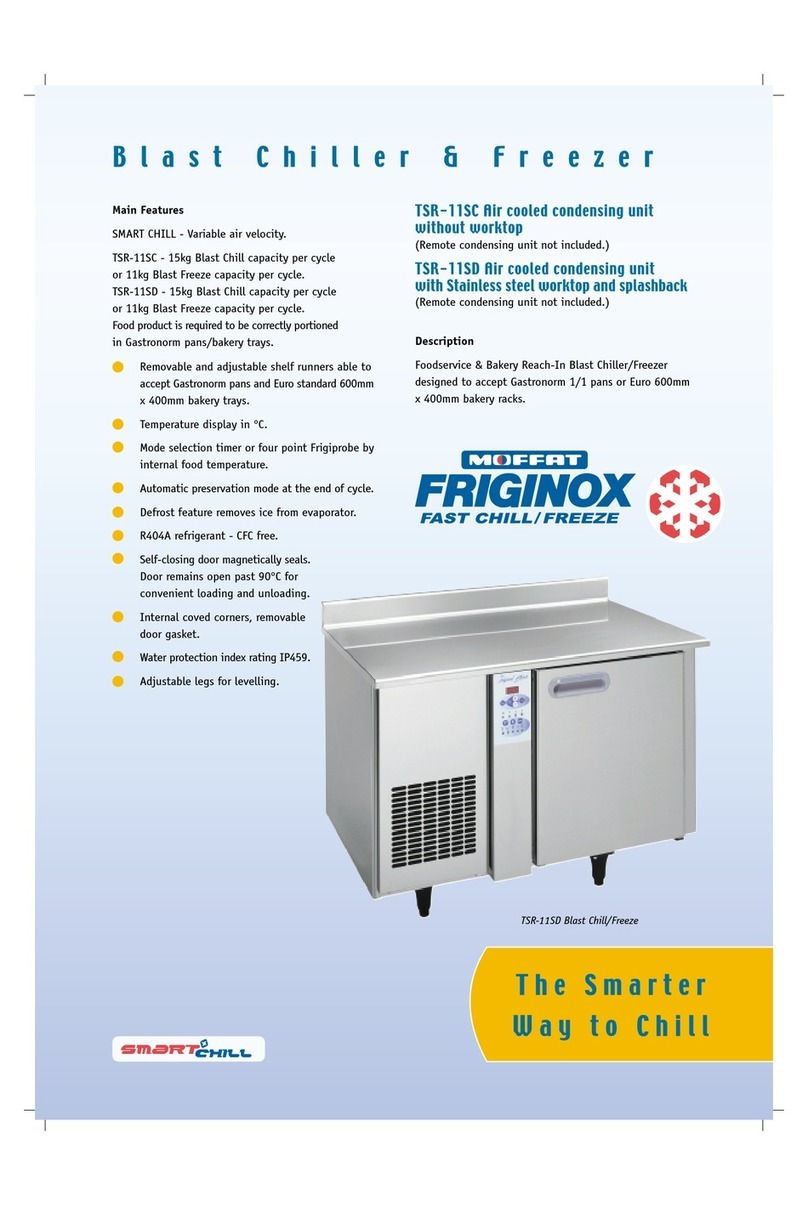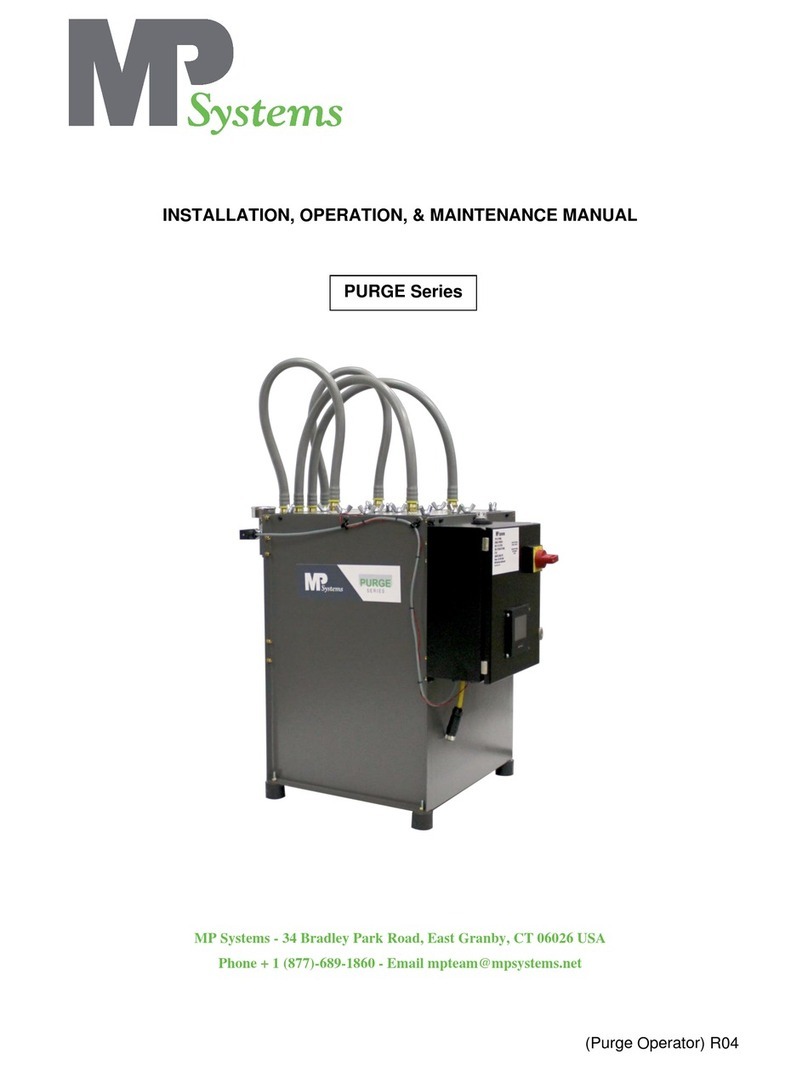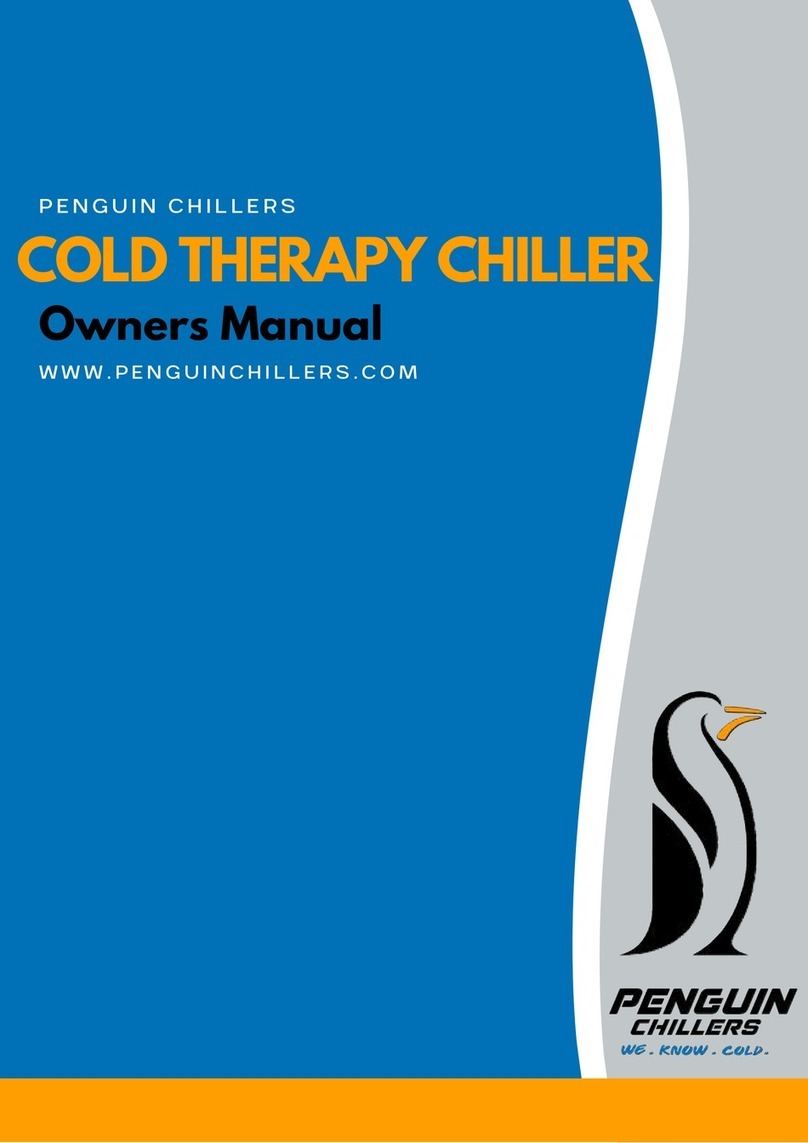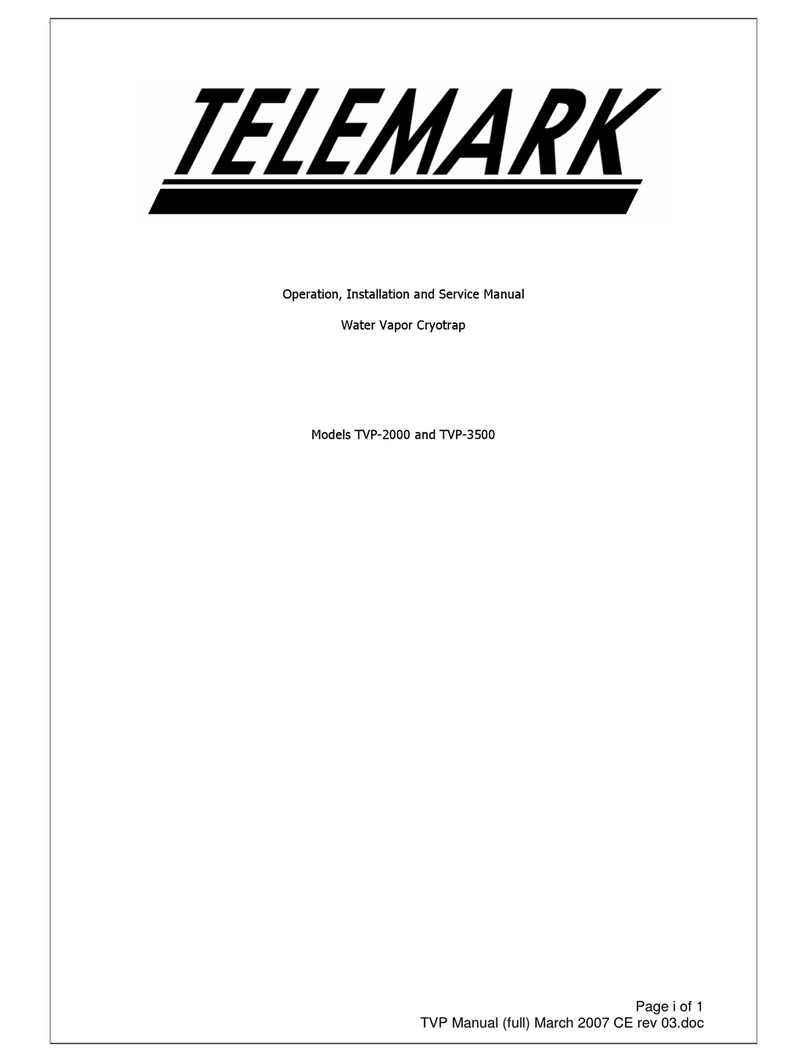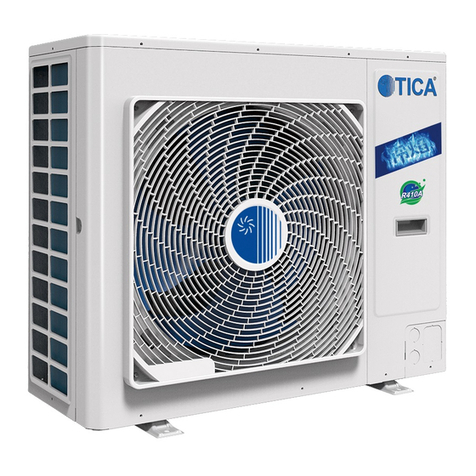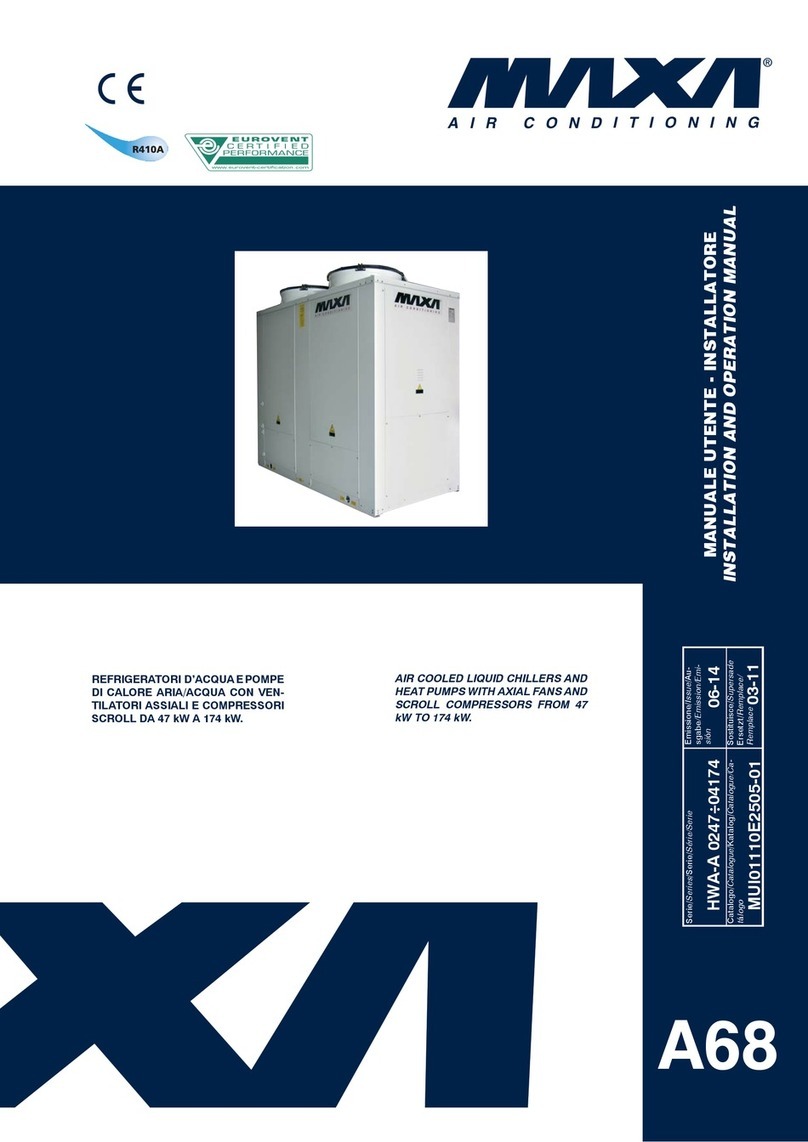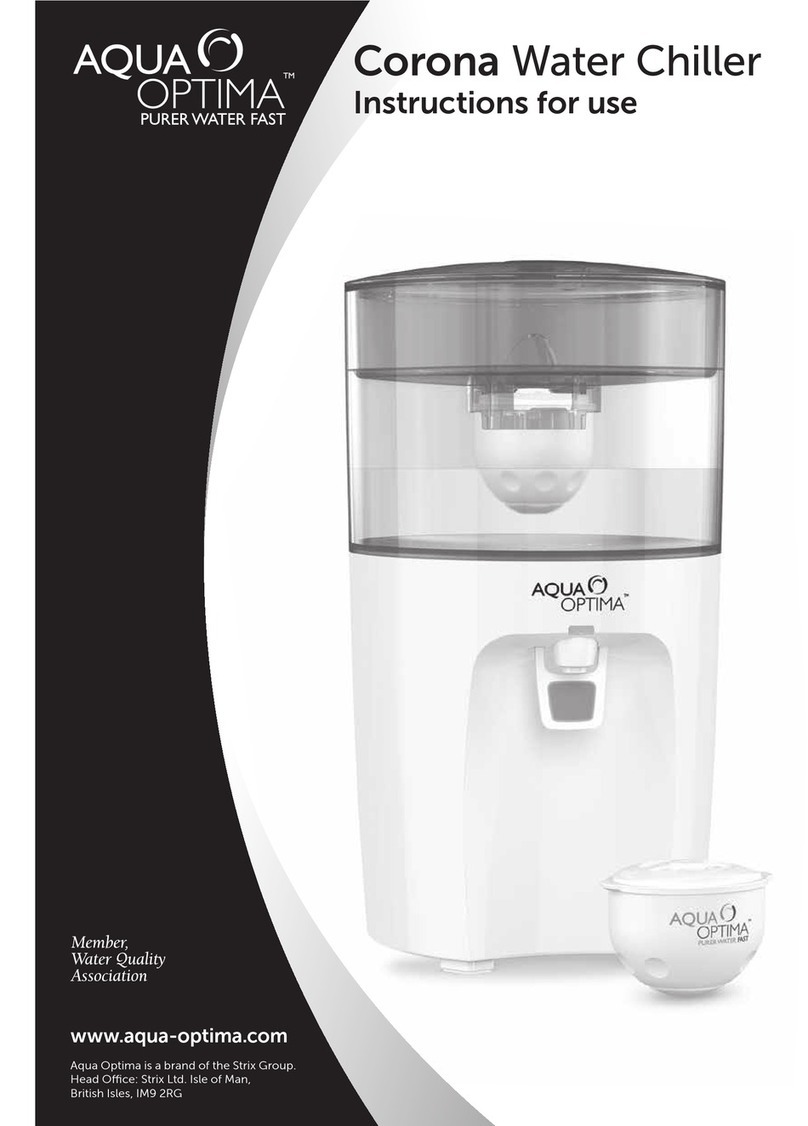
MCAC-CTSM-2018-1 Flooded type water cooled screw chiller (MIC)
3
I. Safety precautions
Before use, carefully read these instructions .
1. Installation safety considerations
(1) Only authorized personnel, qualified and trained in HVAC system maintenance can access the unit. The
access limitation device must be installed by the customer (e.g. cut-off, enclosure). Units should be
inspected for damage upon receipt, before installation, and before powered on.Check the refrigerant
circuit(s) is (are) intact and in place, especially components and pipes. If in doubt, carry out a leak
tightness check and verify with the manufacturer that the circuit integrity has not been impaired. If
damage is detected upon receipt, immediately submit a claim with the shipping company. Midea
strongly recommends employing a specialist company to unload the machine.
(2) It is compulsory to wear personal protection equipment. Do not remove the skid or the packaging
until the unit is in its final position. Move these units with a fork lift truck, providing the forks are in the
right place.
(3) The units can also be lifted with slings, using only the designated lifting points marked on the unit.
Use slings that are the correct capacity, and always follow the lifting instructions on the certified
drawings supplied with the unit. Safety is only guaranteed, if these instructions are followed carefully.
If this is not the case, there is a risk of damage or injury. Never cover any safety devices. This
applies to the relief valve(s) in the refrigerant circuit(s). Ensure that the valves are correctly installed,
before operating the unit.
(4) The relief valves are designed and installed to ensure protection against overpressure caused by
fire. The relief valve must only be removed if the fire risk is fully controlled and after checking that
doing so is allowed by local regulations and authorities. This is the responsibility of the operator. If
the unit is installed in a room, the safety valves must be connected to discharge pipes.
Note:
These pipes must be installed in a way that ensures that people and property are not exposed to
refrigerant leaks. These fluids may be diffused in the air, but far away from any building air intake, or they
must be discharged in a quantity that is appropriate for a suitably absorbing environment. Install an
indicating device to show if part of the refrigerant has leaked from the valve. The presence of oil in the
outlet is a useful indicator that refrigerant has leaked. Keep the outlet clean to ensure that any leaks are
obvious. The calibration of a valve that has leaked is generally lower than its original calibration. The
new calibration may affect the operating range. To avoid tripping or leaks, replace or re-calibrate the
valve. Periodically check the relief valves. Ensure good ventilation, as an accumulation of refrigerant in
an enclosed space can displace oxygen and cause asphyxiation or explosions. Inhalation of high
concentrations of vapor is harmful and may cause heart irregularities, unconsciousness, or death. Vapor
is heavier than air and reduces the amount of oxygen available for breathing. These products cause eye
and skin irritation. Decomposition products are hazardous.
2. Maintenance safety considerations
2.1 Engineers safety considerations

